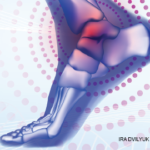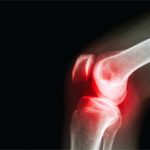No weight-bearing joint problem is independent. Rather, joints function together in an interdependent way as an integral part of our kinetic chain, the alignment of which ultimately determines our ability to function asymptomatically. Structural alignment always has an important role in rheumatology for two reasons. First, no one is born structurally perfect—even our right and left sides are not identical mirror images of each other. Any degree of malalignment will (like the tires on a car) result in premature, abnormal joint wear. Because none of us are perfect structurally, joint-deteriorating imperfections are present constantly, in every patient, until corrected.
Second, OA—like rheumatoid arthritis (RA) and other diseases that can affect the weight-bearing joints—can alter gait patterns, which can result in deteriorating frictional forces on other joints that may not yet be symptomatic. Pathomechanics is always a factor in the arthritic conditions we’re treating; sometimes, as in the case of OA, it can be the primary factor. I would assert that any treatment that does not address pathomechanics is incomplete at best.
The foundation is critically important to any structure, and our bodies are no different. To help patients with OA of the weight-bearing joints function better, the first place to look is their feet. We are all like the Leaning Tower of Pisa, meant to stand erect but cockeyed since birth. The way such a structure is fixed is not by taking wedges out or splinting its middle, but by shoring up its foundation. When treating OA patients, have them stand up and make sure that their feet are optimally positioned (subtalar neutral) under their legs. In most cases, if this is accomplished, you will see an immediate decrease in symptoms and increase in function. My experience is that the more accurately this is done, the better the results.
It is interesting that most examinations for painful knees and hips are done sitting or supine, even though this is not how these patients will function. To truly evaluate OA patients, more attention needs to be directed to seeing how they stand and walk. Isn’t that why we prefer in vivo studies to those in the test tube? We want to understand how things work in a real world environment, not an artificial one.
We know that motion is an essential part of maintaining a healthy joint. The “use it or lose it” philosophy seems quite logical. But using a joint in poor alignment is also destructive—pitcher’s elbow is a prime example. Observing how a patient’s joints function when bearing weight is essential to evaluation.

